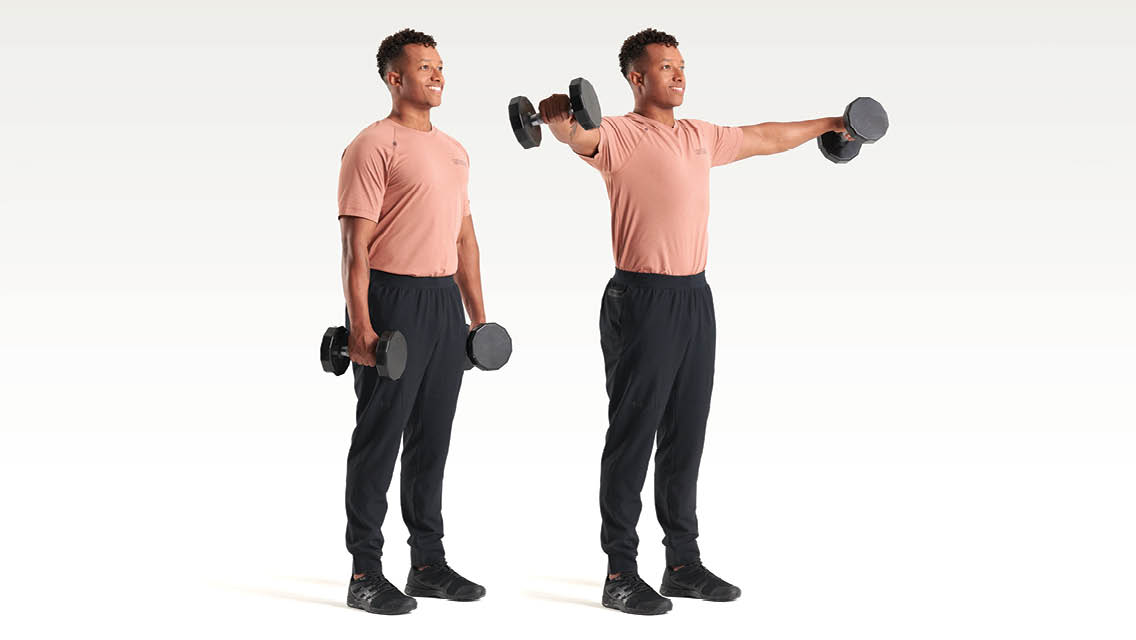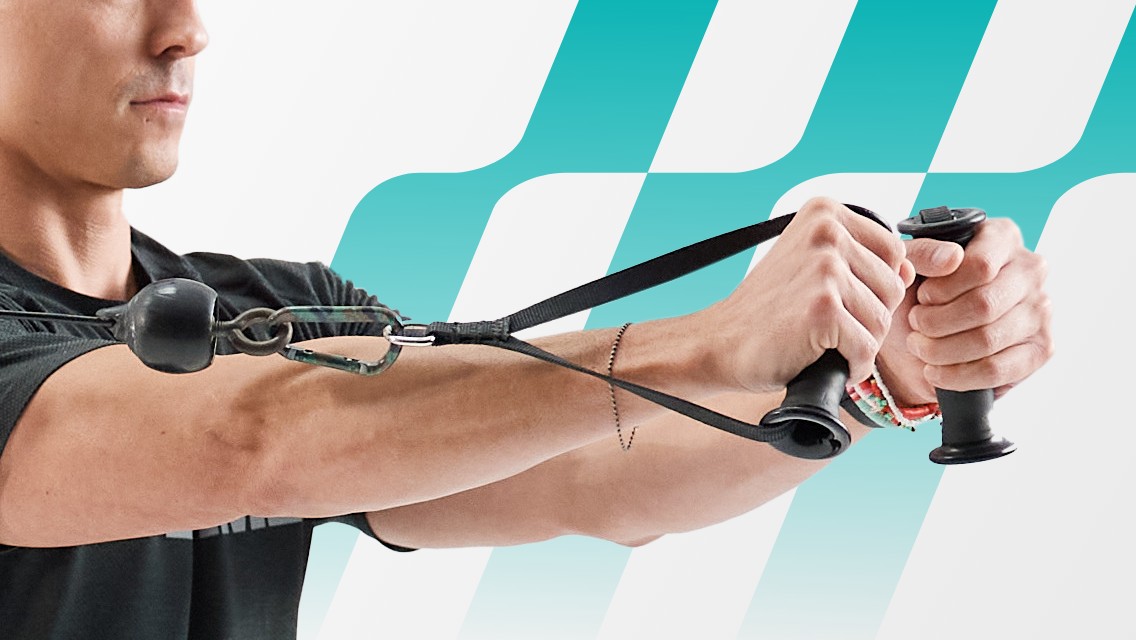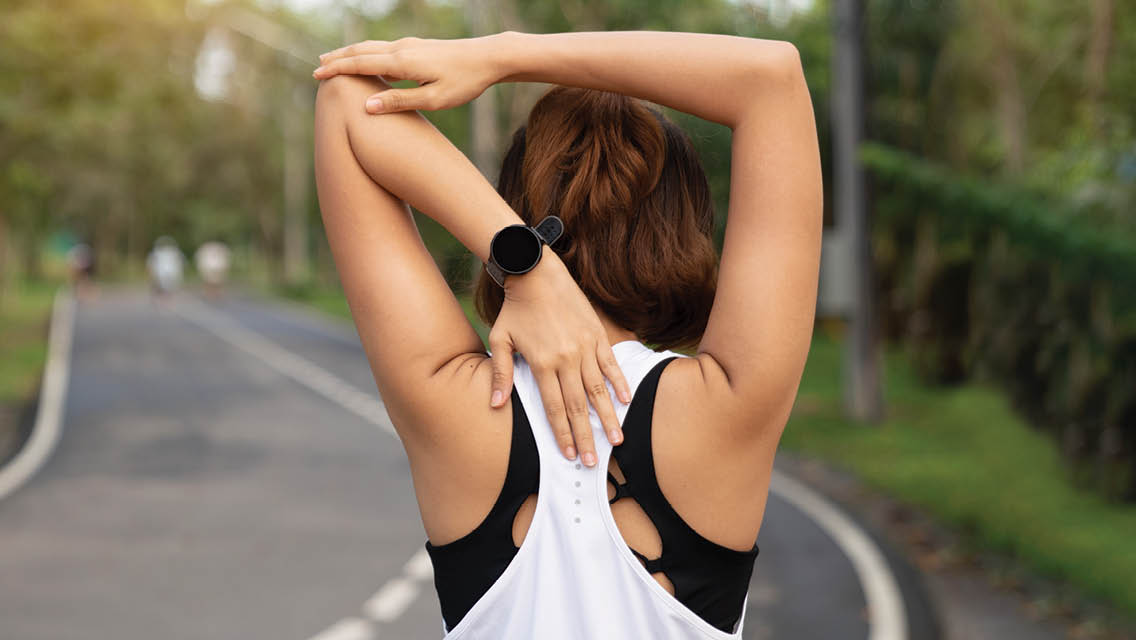Lateral raises are popular moves for building rounded and defined deltoids. They also offer lesser-known benefits that support shoulder health.
They can improve shoulder strength, mobility, range of motion, and stability, as well as help identify and correct muscle imbalances between your right and left sides.
Now, your routine doesn’t need lateral raises: You can train upper-body strength and mobility without ever doing one. (Find a well-rounded upper-body routine at “Fit + Focused.”) But if you want to incorporate lateral raises into your regimen, be it for aesthetics or function, it’s critical to focus on your form.
Common pitfalls include using too much weight, shortening your range of motion, bending your elbows too much, lifting your arms too high, scrunching up your shoulders, and swinging the weights up. Often, these problems stem from a belief that lateral raises are supposed to be a big and impressive lift. They’re not.
The lateral raise is best considered an accessory lift that isolates the shoulders and complements a broad, well-balanced strength-training routine. With ego out of the way, it becomes possible to focus on quality of movement and truly get the most out of this exercise.
Instructions
- Stand with feet about hip width apart. Grasp a light dumbbell in each hand, with arms long and at your sides, palms facing your body.
- Keep a slight bend in the elbows, then raise the dumbbells out to each side. Hold the rest of your body still as you lift.
- Raise your arms until they’re parallel to the floor, but no higher. Keep your shoulders down and back, your core engaged, and your neck relaxed.
- Lower the dumbbells slowly to return to the starting position; repeat for the desired rep count.
Additional Form Tips
- Start with light weights — 5 to 10 pounds — or even no weights at all until you have a firm grasp of the proper form.
- Maintain a tall, proud chest and look straight ahead.
- Play with your hand position to optimize your shoulder position. Try it with your palms facing down, your thumbs pointing straight up, and anywhere in between.
- Avoid rocking, jumping, or swinging the weights up.
8 Lateral Raise Variations
1) The Front Raise
- Grasp two dumbbells and stand with your arms long and at your sides, palms facing your body.
- With a slight bend in your elbows, raise the dumbbells out in front of you.
- Lift until your arms are parallel to the floor, thumbs facing the ceiling.
- Slowly lower the dumbbells to return to the start position and repeat.
2) Bent-Arm Lateral Raise
- Bend your elbows and tuck one dumbbell into the crook of each elbow. Keep your elbows bent to about 90 degrees, with palms in and thumbs up, to support the head of the dumbbell.
- Raise your arms to the sides until your elbows and wrists reach shoulder height. Keep your elbows bent; your palms will now be facing the floor.
- Slowly lower the dumbbells to return to the start position and repeat.
3) Single-Arm Lateral Raise
- Stand with feet about hip width apart. Grasp a light dumbbell in one hand, with arms long and at your sides, palms facing your body.
- With a slight bend in your elbow, raise the dumbbell out to your side.
- Lift until your arm is parallel to the floor.
- Slowly lower the dumbbell to return to the start position and repeat.
- Complete the desired number of reps on one side, then repeat with the opposite arm.
4) Seated Lateral Raise
- Sit on the edge of a sturdy chair or bench, your feet flat on the floor and core engaged. Grasp a light dumbbell in each hand, with your arms long and at your sides, palms facing your body.
- With a slight bend in the elbows, raise the dumbbells out to your sides.
- Lift until your arms are parallel to the floor.
- Slowly lower the dumbbells to return to the start position and repeat.
5) Kneeling Lateral Raise
- Assume a tall kneeling position, with your hips fully extended and glutes lightly engaged. Grasp a light dumbbell in each hand, with your arms long and at your sides, palms facing your body.
- With a slight bend in your elbows, raise the dumbbells out to your sides.
- Lift until your arms are parallel to the floor.
- Slowly lower the dumbbells to return to the start position and repeat.
6) Single-Arm Cable Lateral Raise
- Position a cable machine at its lowest position and attach a single handle.
- Position one side of your body to face the machine and reach across your body with the opposite-side hand to grab the handle.
- With a slight bend in your elbow, pull the handle across your body on a diagonal, raising the handle to shoulder height.
- Slowly lower the handle to return to the start position and repeat.
7) Two-Arm Cable Lateral Raise
- Stand between two cable-machine stations. Position each machine at its lowest position and attach a single handle.
- Facing the machines, grasp each handle with the opposite-side arm: Your right hand will hold the handle on the machine to your left, and vice versa. Your arms will be crossed in front of you to start.
- With a slight bend in your elbows, pull both handles out to your sides, raising the handles to shoulder height.
- Slowly lower the handles to return to the start position and repeat.
8) Single-Arm Banded Lateral Raise
- Using a long, closed-loop resistance band (often called a superband), secure one end of the band against the floor with your foot and grasp the other end with your opposite hand. (If you stand on one end with your left foot, hold the other end of the band with your right hand and vice versa.)
- Stand with feet between hip width and shoulder width apart and allow the arm holding the band to cross over the front of your body, palm facing in toward the opposite hip. This is your starting position.
- With a slight bend in your elbow, pull the band across your body on a diagonal, raising your arm to shoulder height.
- Slowly lower your arm to return to the start position and repeat.
This article originally appeared as “The Lateral Raise” in the June 2023 issue of Experience Life.






This Post Has 0 Comments